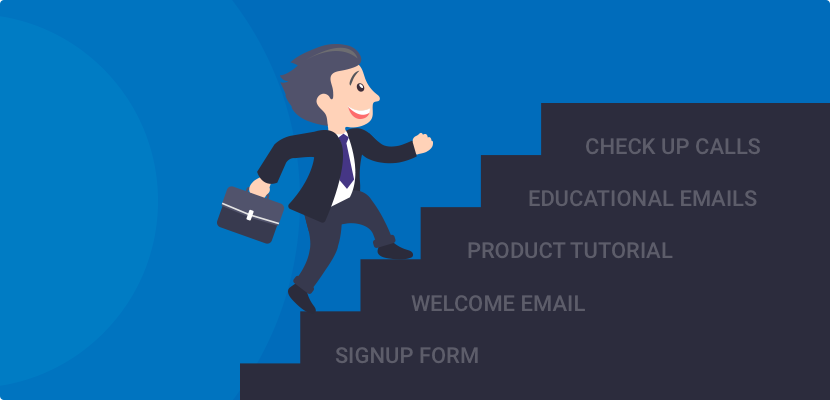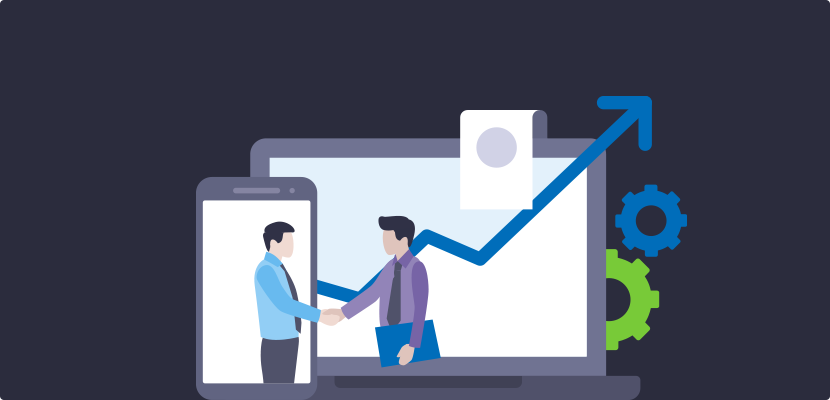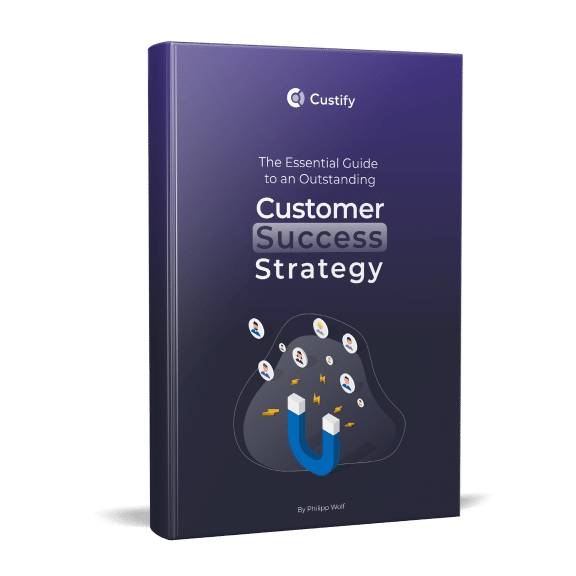
The first “experience” that your users go through with your SaaS product is the sign-up flow. Keeping aside the fact that first impressions are crucial, it makes a lot of sense to make your sign up flow as frictionless as possible.
SaaS sign-up flows are often clubbed along with user onboarding, but they are, in fact, separate processes geared towards one aim.
If you aim to sell a car, think of signing up as getting the user to enter the car. The onboarding is where you teach them how to drive and the cars’ various features. An optimized onboarding experience without a good sign up flow makes no sense – a great driving instructor isn’t of much use if no one is getting in the car.
Hence, the sign-up flow can be seen as a “prequel” to onboarding. And it must be optimized independently.
In SaaS terms, the sign-up flow consists of collecting a certain amount of data from users to set them up in your user base, authenticate their identity, and assign roles. If done correctly, it helps the user personalize their account, give them a sense of control and being part of a community.
There are various ways to collect user data by moving the steps around in your flow. A good sign up flow aims to collect data from users in a way that feels natural and gives them a feeling of getting something in return. Let us take a look at some of the most popular SaaS Sign up Flows:
Asking for All The Data Upfront
This sign up flow resembles the customer experience we go through while signing up for most non-digital services in real life. For example when you want to rent a car – you walk into the rental store, provide all necessary details (sign up forms), make the necessary payments, and then you get access (keys) to the service (car).
Most users are acquainted with the user experience of this flow, due to its wide adoption in both real life and digital businesses. This makes users much likely to complete the process without much difficulty. Further, as all necessary details are collected upfront, it makes the processes of identity authentication much easier. This also helps in data analysis, you can identify valuable prospects and upsell opportunities to focus on them better.
The user ‘works hard’ to gain access to the product. This creates a commitment bias in their mind. It will make them more likely to try it out as they have already put in some amount of work.
Making the user work upfront has its downsides, of course. All the ‘hard work’ will cause a specific amount of users to drop off before they complete the process, even if they were interested in your product. As you’re asking for a ‘commitment’ (in terms of data), users may have doubts as they have no idea of what they’re getting into. Is your product really worth all the friction of the sign-up process they have to go through?
If you use this sign up flow for your SaaS, a good way to minimize the friction is by explaining the purpose of the data you’re collecting, as Slack does.
Using helpful microcopy, explain why users have to complete each part of the sign-up process. It tells them how the data they’re providing is going to help, so they feel like they’re getting something in return.
Asking For All Data After Providing Some Access
So, asking users for too much data before providing any access can result in unwanted levels of friction. This sign up flow aims at minimizing the initial friction for the users, and provides them instant initial access. This gives them a ‘taste’ of what they’re in for. You ask the user to complete rest of the registration process at a later point.
Removing the friction upfront has its advantages. Imagine you own a gym and a new member comes in. How do you have them spend their first day? Allowing them to have a run of the equipment and services would make a lot more sense than making them fill out a bunch of forms.
This is the approach Chargebee used in their sign up flow. They provided immediate access to the user with just their email
Only asking them to finish signing up the second time they return to the application.
By allowing the users a glimpse of how your product can add value to their life, asking for their data will feel a lot more justified. Also, the people who go through the effort of completing the sign-up process can be immediately identified as prospects that are serious about using your products (upsell and upgrade opportunities). This automatically filters out the people who wouldn’t end up becoming paying customers. This approach combines the principles of removing early friction and justified data collection.
Things can go wrong here too. As you offer immediate access, you’ll have to remove the steps used to authenticate their identity. This will result in getting some amount of spammers and non-relevant sign-ups. Also, there is no commitment bias here; (unlike the first approach) and users may not have enough motivation to come back. Since you don’t have any additional information on them, it can be hard to classify the 1st step sign ups into serious evaluators and otherwise.
Instant Initial Access, Contextual Data Collection (“Lazy Signups”)
Friction for users is reduced when they have the context of why they’re being asked to perform specific actions. This SaaS sign up flow aims at minimizing the user friction by making data collection as contextual as possible. It focuses extensively on user experience.
Users are offered immediate access initially, similar to the second approach. Sign up forms, even if presented at a later stage, ask for data without any context. This approach believes that a better way is to show the users context as they use the product, and collect data with gradual engagement. This process hence takes place without sign up forms
You can start building your family tree as soon as you land the website, without any upfront friction. When you want to use further features like finding your ancestors and delving deeper into your genealogy, you are prompted to fill out other information.
Geni asks the user for relevant data when they try to use the functionalities which need the specific data they’re collecting. Hence, the user would be signing up “over time” as they explore the product (lazy registration). This approach is friction free from the user’s perspective. It provides them with enough context to provide data when they need to.
Another strong technique used in the lazy sign-up flows is asking for user data with the context of saving their work. As they’ve already played around with the product and seen some value, users would want to save it before they leave.
Lazy signups do make the process quite smooth but it has its own downsides. Users are not explicitly “creating accounts” as there is no separate sign up process. As the process of data collection is gradual (and will take place in different sequences) - when does a user become “qualified” to get an account? Which details must they have provided in the least? You can lose out on interested users here if they leave at some point in the middle of the gradual engagement, and you won’t have any way to get in touch with them.
Once you have created an account for them – how to make sure the users know they have one? How to provide them access to it? If users don’t have a clear understanding of the presence of their account and the access procedure, they might not come back.
Friction in Sign Up Flows: Not Always Evil
Although every flow focuses on minimizing friction, it can sometimes play a part in enhancing the overall user experience. This holds true in the case of companies that provide a large number of products/services and cater to a large user base.
Take the example of Wix, the website builders. They cater to a plethora of businesses around the world and their template library is huge. They ask the user about their type of business before letting them access the templates.
This added friction helps them suggest the optimal templates to the user for their business, making the user experience much friendly. If they gave the user access to the entire library, the user might have had a hard time navigating and finding a template that fit his/her choice.
SaaS Sign Up Flows, In Conclusion:
There is no “one size fits all” solution when it comes to sign up flows In particular. You can follow these best practices to define yours:
- Identify the purpose of your sign up flow: Is it a greater number of leads? Is it higher quality leads? Is it an enhanced user experience and engagement? Increased data on individual users? Answers to these questions will depend on your product and you can define where you sign up process helps.
- Study your user base: This is extremely crucial while designing a sign-up flow. Different ages/professions/ positions result in different attention spans, preferences and ways in which people interact with software. For example, young professionals looking for jobs may prefer a lazy registration process at a job board website. The middle age recruiter counterpart might, however, prefer a standard upfront sign up flow which gives them security of the job being posted. Always optimize your sign up flow for your user base.
- Consistent Behaviour Tracking: Once you have put together a healthy flow, it is essential to optimize it over time by tracking how users interact with it. At Custify, we’ve developed the best customer success tool which can help you track user behavior along with KPIs to measure the performance of your sign up flow. This can help you optimize them with crucial insights. Get in touch for a free demo today.
Following these practices can help you build and optimize a sign-up flow for your SaaS which will increase conversions over time.




